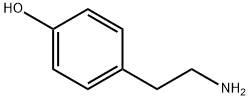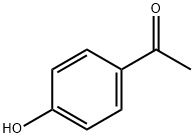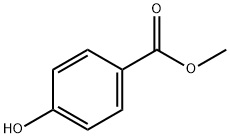A7681012
Tyramine , 98% , 51-67-2
Synonym(s):
2-(4-Hydroxyphenyl)ethylamine;4-(2-Aminoethyl)phenol;4-Hydroxyphenethylamine
CAS NO.:51-67-2
Empirical Formula: C8H11NO
Molecular Weight: 137.18
MDL number: MFCD00008193
EINECS: 200-115-8
| Pack Size | Price | Stock | Quantity |
| 1G | RMB23.20 | In Stock |
|
| 5G | RMB23.20 | In Stock |
|
| 25G | RMB50.40 | In Stock |
|
| 100G | RMB128.00 | In Stock |
|
| 500G | RMB519.20 | In Stock |
|
| others | Enquire |
Update time: 2022-07-08
PRODUCT Properties
| Melting point: | 160-162 °C(lit.) |
| Boiling point: | 175-181 °C8 mm Hg(lit.) |
| Density | 1.0630 (rough estimate) |
| refractive index | 1.5849 (estimate) |
| FEMA | 4215 | TYRAMINE |
| Flash point: | 165°C |
| storage temp. | 2-8°C |
| solubility | DMSO (Slightly), Methanol (Slightly) |
| form | Liquid |
| pka | 9.74(at 25℃) |
| color | Clear yellow to orange to slightly brown, may darken on storage |
| Odor | at 100.00 %. mild meaty dirty cooked phenolic rubbery |
| Odor Type | meaty |
| biological source | synthetic |
| Water Solubility | 1g/95mL (15 ºC) |
| Merck | 14,9835 |
| JECFA Number | 1590 |
| BRN | 1099914 |
| Stability: | Stable. Incompatible with strong acids, strong oxidizing agents. |
| LogP | 1.38 |
| CAS DataBase Reference | 51-67-2(CAS DataBase Reference) |
| NIST Chemistry Reference | Phenol, 4-(2-aminoethyl)-(51-67-2) |
| EPA Substance Registry System | Tyramine (51-67-2) |
Description and Uses
A decarboxylation product of tyrosine found in various fermentation products, including cheeses and some wines. It causes sympathomimetic effects by acting as an indirect agonist, causing the release of endogenous catecholamines. Because it is metabolized principally by monoamine oxidase, patients taking monoamine oxidase inhibitors may have a hypertensive crisis if they ingest foods containing significant amounts of tyramine.
adrenergic agonist, vasoconstrictor
Safety
| Symbol(GHS) |  GHS07 |
| Signal word | Warning |
| Hazard statements | H315-H319-H335 |
| Precautionary statements | P261-P264-P271-P280-P302+P352-P305+P351+P338 |
| Hazard Codes | Xi |
| Risk Statements | 36/37/38 |
| Safety Statements | 26-36-37/39 |
| WGK Germany | 3 |
| RTECS | SJ5950000 |
| F | 10-23 |
| HS Code | 29214990 |
| Hazardous Substances Data | 51-67-2(Hazardous Substances Data) |
| Toxicity | LD50 intracervical in mouse: 30mg/kg |





